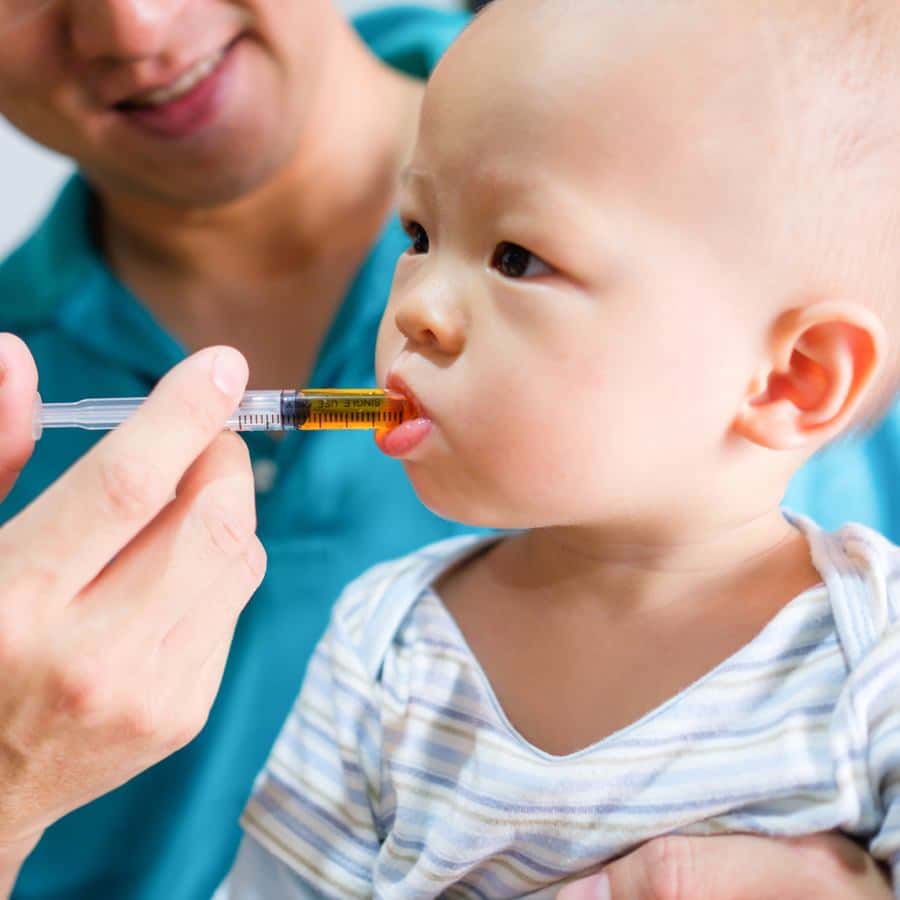
What do you do when your young child gets a fever, a cough or a sore throat? If you’re like most parents, you look around the medicine chest for something to ease the symptoms. But what will you find there, and just as important, how much will you give your child? Will you be able to administer the right dose?
Dosing children’s medicine can be tricky. Children are especially vulnerable to medication mistakes and side effects. Every day dozens of children end up in emergency rooms because they have received too much medicine. Some die.
These tragedies involve both over-the-counter and prescription medicine and most could be prevented.
How Do You Determine the Right Dose?
A survey last year by the Consumer Healthcare Products Association found that a quarter of parents are not concerned about accurate dosing of nonprescription drugs, but they should be. Giving an infant or toddler too much acetaminophen, for example, can be a serious mistake.
Kids Shouldn’t Get Adult Medicines:
Years ago, we heard from Janet about the time her daughter Emily broke her arm. The doctor who set the arm in a cast recommended Tylenol for pain. But in the middle of the night, Emily was whimpering because her arm hurt. Looking for something stronger, Janet retrieved a pain reliever left over from her own dental procedure the year before. She crushed a tablet into applesauce and gave it to Emily, unaware that the adults dose of acetaminophen was far too high for a little girl.
Luckily, Emily didn’t suffer serious consequences, but parents shouldn’t count on such luck. Children are not just smaller grown-ups. Giving them medicines intended for adults is a risky business.
Beware Giving Too Much Acetaminophen:
Some babies have died as a result of liver damage due to acetaminophen overdose. Several years ago, ProPublica documented one terrible case. Christina and Eric Hutto had given their baby Brianna Tylenol for a cold and fever. A nurse had suggested one teaspoon every four hours. But the Infants’ Tylenol Christina bought at Walmart was more concentrated and had very different dosing instructions from the Children’s Tylenol the nurse had in mind. The Huttos used a little plastic cup with teaspoon markings on it to measure out the syrup carefully, then used the dropper that came with the medicine to get it in the baby’s mouth. They were conscientious–but didn’t realize they were overdosing their baby.
When the baby stopped crying and became listless, the parents got alarmed and took her to the hospital. It took too long to discover they had accidentally administered an acetaminophen overdose. The baby’s liver had been destroyed and she died two weeks later despite heroic efforts in pediatric intensive care units.
Watch Out for Multi-Symptom Drugs:
Cold and cough medicines often advertise “multi-symptom” relief. That may mean a pain reliever, a decongestant and an antihistamine like Advil Multi-Symptom Cold & Flu medicine. It contains ibuprofen, phenylephrine and chlorpheniramine. The manufacturer warns parents not to use the medicine for children under 12 because the dose is too high. But a small 12-year-old might have trouble sleeping because of the decongestant. And some kids are stimulated by antihistamines and could end up bouncing off the wall.
Kitchen Spoons Won’t Give the Right Dose:
Most young children’s medicine is liquid, because babies can’t swallow pills. But if a parent pulls a spoon out of the silverware drawer to pour out the medicine, the dose can be way off.
Do you know how many teaspoons are in a tablespoon? And how many milliliters are in a teaspoon? Lots of people don’t carry this information around in their heads. Twenty years ago, researchers found that some parents were not even clear on the difference between a teaspoon and a tablespoon (Madlon-Kay & Mosch, Journal of Family Practice, Aug. 2000). Such a mix-up could easily result in the wrong dose.
In this study, parents were shown different measuring devices and asked to demonstrate using them. Three fourths of them said they usually use household spoons to measure liquid medicine. Although a medical teaspoon is exactly 5 milliliters, the spoon you use to stir your coffee might hold as little as 2 ml, and the one you use for your breakfast cereal might accommodate 10 ml. The child getting too much antibiotic might have unanticipated side effects. In addition, the medicine might not last for the prescribed 10 days of treatment.
Try an Oral Syringe:
What should parents use to measure liquid medicine accurately? The best device is an oral syringe. Most pharmacies carry these low-cost devices, and some will dispense them for free with children’s medicine. After you double-check the right dose with the physician and the pharmacist, an oral syringe can help you make sure the child actually takes the correct amount.
Parents are not the only ones who make mistakes. Drug manufacturers that offer dosing guidelines based on age ranges rather than weight contribute to the problem.
Giving the right dose is critical for using medicine safely. Whether the patient is two or 92, calculating the proper dose and measuring it accurately is essential.

